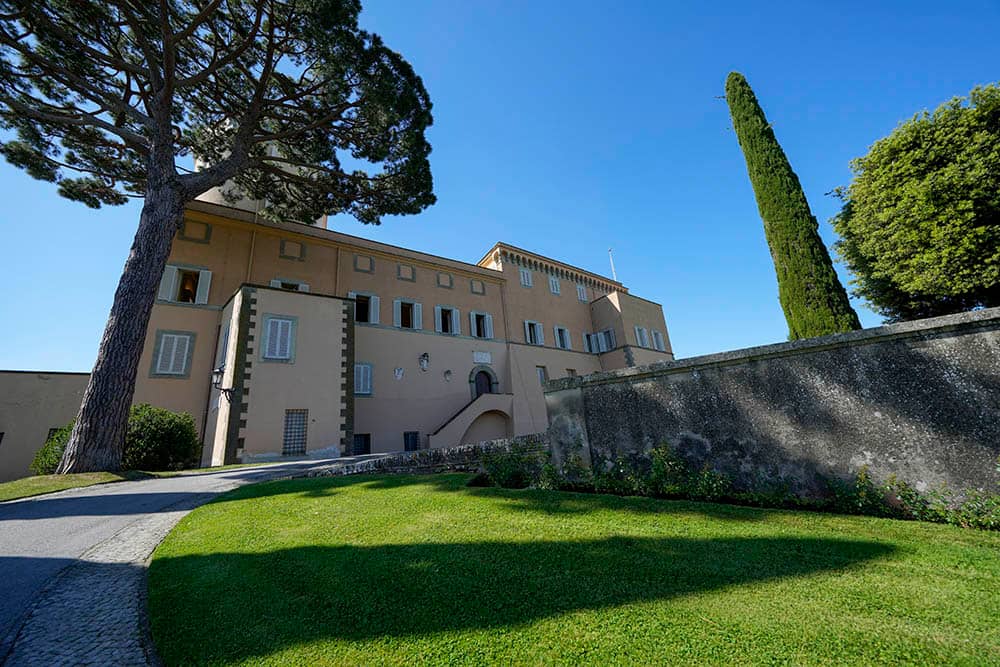ROME – In many ways 2018 was a tough year for Pope Francis with the explosion of fresh clerical abuse scandals in several parts of the world, and in light of news that an Argentine bishop working at the Vatican at Francis’s personal invitation has been accused of sexual abuse, 2019 doesn’t appear to be starting off any easier.
In fact, the case of Bishop Gustavo Zanchetta threatens to become a rare double “own goal” for the pontiff, creating self-inflicted wounds on two critically important reform fronts: the abuse crisis, and the Vatican’s pledge of greater financial transparency and accountability.
The Zanchetta saga began in July 2013, when Francis nominated him the bishop of Orán in the northern part of Argentina. Three years later, Zanchetta left the diocese, citing problems of health that didn’t allow him to deliver adequate pastoral care to such a geographically dispersed territory.
Francis accepted Zanchetta’s resignation just three days after it was offered in August 2017, suggesting to many observers there was some perceived rush to get him out of Orán. There were whispers of some serious problems between Zanchetta and his clergy, but that’s about as far as it went in terms of explaining what had gone wrong.
For the 18 months after leaving the diocese Zanchetta was basically a man without a country, flying below radar with no clear role or assignment. Then in December 2017, the Vatican announced that Francis had appointed his fellow Argentine to a new role of “assessor” at the Administration of the Patrimony of the Apostolic See (APSA), the department that oversees the bulk of the Vatican’s financial assets.
Because APSA had never had an assessor before, it was unclear at the time precisely what Zanchetta would be doing – and, frankly, it remains a bit unclear today. Italians assumed the appointment was what’s known colloquially as a parcheggio, or “parking spot,” until some better idea of what to do with Zanchetta came along.
Recently, local media in Argentina has reported that three priests have lodged charges of abuse of power, economic abuse and sexual abuse at the seminary in Orán against Zanchetta with the Vatican’s nuncio, or ambassador, in the country.
The Vatican’s new spokesman, Alessandro Gisotti, released a statement on Friday saying that the charges have only emerged in recent months, clearly implying that Francis did not know about them when he named Zanchetta to his Vatican role.
Gisotti also said that the 54-year-old Zanchetta would not perform any Vatican duties while an investigation is underway.
Here’s why the Zanchetta mess could create perceptions of two “own goals,” meaning kicking the ball into your own net, by the pontiff.
First, 2019 shapes up a make-or-break year for Francis on the clerical abuse scandals. He’s coming off a year that featured a massive crisis in Chile, the Pennsylvania grand jury report, the scandals surrounding ex-Cardinal Theodore McCarrick and the bombshell accusations by a former papal envoy in the U.S. that Francis himself was in on the cover-up.
The pope is also looking ahead to a critical Feb. 21-24 summit on the abuse crisis for presidents of bishops’ conferences around the world, which the pope’s allies have touted privately as an opportunity for Francis to regain the initiative.
If that meeting unfolds under the cloud of perceptions that Francis provided Vatican cover for a fellow Argentine running away from abuse allegations, whether knowingly or not, it could undermine his efforts to turn a corner. Rather than extolling the virtues of whatever initiatives the bishops discuss, the pope’s brand-new communications team could spend all their time trying to put out fires related to the Zanchetta affair.
The Zanchetta case also raises questions about the seriousness of the pope’s financial reforms, at a time when most observers had already concluded that Francis, for all intents and purposes, has given up.
Although public attention when it comes to Vatican finances usually focuses on the Institute for the Works of Religion, the so-called “Vatican bank,” insiders know that’s always been a red herring. The clean-up operation at the bank began under Pope emeritus Benedict XVI, and in any event, relatively little of the roughly $6 billion in assets controlled by the bank belongs to the Vatican.
Most of it belongs to religious orders, especially nuns, who need to transfer money easily around the world, along with dioceses and other Catholic organizations.
Instead, APSA is the Vatican’s real financial colossus, controlling both its stock and bond investment portfolio as well as its extensive real estate holdings – all in, the total pool of assets administered by APSA is estimated at $16 to $18 billion, and that’s probably low given chronic under-valuing of property over the years. (Because the Vatican doesn’t intend to sell most of its properties, it doesn’t have them assessed at real market value.)
Insiders, therefore, have known for a long time that the real action in terms of financial reform has to be at APSA, and so far there’s been little indication of fundamental change. For sure, the pope appointing an “assessor” to APSA mostly to get him out of hot water back home doesn’t really come off as a stirring statement of commitment to change.
On both clerical abuse and financial reform, therefore, Francis is arguably opening 2019 already down 0-2, scoring twice for the other team (and on the same play, no less). The good news for the pontiff is that it’s still early, and the year to come will afford plenty of chances to get back in the game.
















